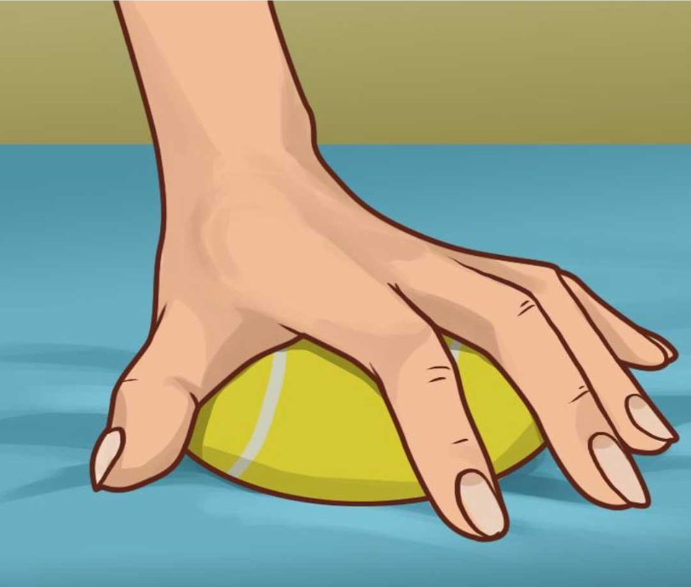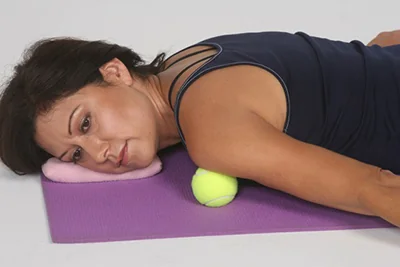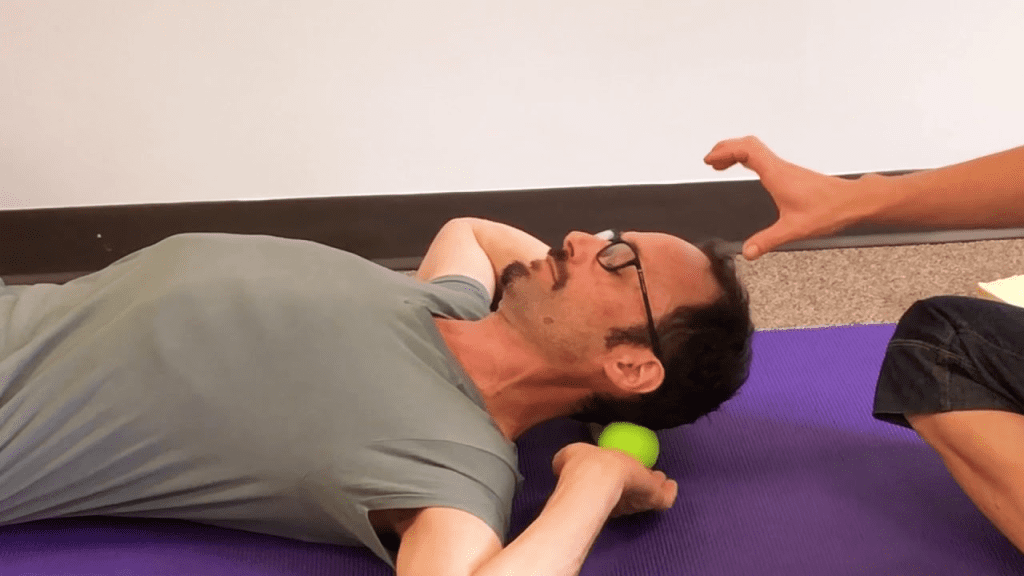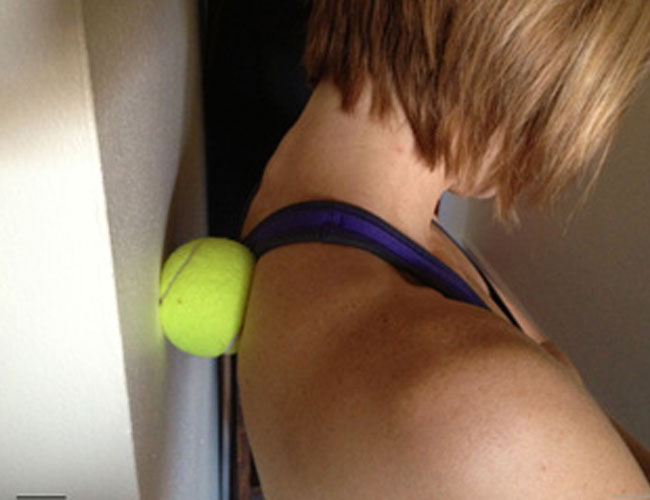Neck and shoulder pain is an all-too-common issue in our modern world. Whether you’re hunched over a desk, staring at a screen, or dealing with the physical toll of daily life, this type of discomfort can affect anyone. Surprisingly, ancient practices offer insights into simple and effective ways to alleviate this pain, often without the need for expensive treatments or medications. This article explores a time-tested method that harnesses an everyday tool—a tennis ball—to target and relieve neck and shoulder tension, inspired by techniques developed over millennia.

Why Neck and Shoulder Pain Are So Prevalent Today
We often overlook how much strain we put on our necks and shoulders. Poor posture, especially while sitting, and repetitive motions are among the leading causes. This pain often comes from muscle tension, but it can also be caused by conditions like arthritis, tendonitis, or even stress. These issues don’t just affect physical health; they can disrupt sleep, focus, and overall quality of life.
The 5,000-Year-Old Method: Ancient Wisdom Meets Modern Solutions
Ancient cultures have long used holistic methods for pain relief, including massage techniques like acupressure and Tui Na from Traditional Chinese Medicine (TCM). These practices focus on releasing energy blockages and promoting balance through targeted pressure on the body. While these methods traditionally relied on the hands of trained practitioners, modern adaptations allow you to experience similar benefits at home.
Modern Twist: Using a Tennis Ball for Targeted Pain Relief
Here’s where ancient wisdom meets modern convenience. By using a tennis ball, you can simulate the pressure applied in traditional massage practices. A tennis ball’s size and firmness make it perfect for pinpointing sore spots and applying just the right amount of pressure. This method is a simple form of myofascial release that anyone can perform to release muscle tension, improve circulation, and reduce discomfort in the neck and shoulders.
How to Choose the Right Tennis Ball for Pain Relief
Choosing a tennis ball might seem trivial, but it can actually make a big difference in your experience:
- Standard Tennis Balls: These are ideal for most people, offering the right balance between firmness and flexibility.
- Softer Balls: If you have sensitive muscles, consider using a slightly softer ball, like a dog toy or stress ball, to avoid excessive discomfort.
- Textured Options: Some tennis balls come with a slight texture, providing additional grip, which can help target problem areas more effectively.
Step-by-Step Guide to Relieve Neck and Shoulder Pain with a Tennis Ball
Ready to try this technique? Here’s a simple guide to get you started:
1. Find a Comfortable Surface
- Start on the floor or against a wall where you can easily control the pressure. If you’re working on your neck, lie down with your head supported.

2. Position the Tennis Ball on the Pain Point
- For neck pain, place the tennis ball at the base of your skull or along the side of your neck.
- For shoulder pain, position the ball between your shoulder blade and the wall, leaning back gently.
3. Apply Gentle Pressure and Roll Slowly
- Roll the tennis ball slowly across the tense areas, using gentle, controlled movements. Avoid rolling over bones; focus on the muscles instead.
- Adjust the pressure as needed—start lightly and increase it gradually if comfortable.
4. Hold the Position
- If you find a particularly tender spot, hold the ball in that position for 15 to 30 seconds before continuing to roll. This allows the muscle to relax and release tension.
5. Repeat Daily
- For optimal results, incorporate this technique into your routine a few times a day, particularly after long periods of sitting or at the end of a stressful day.
Why the Tennis Ball Technique Works: The Science Behind It
This technique is based on principles of myofascial release, a form of therapy that targets the fascia, a layer of connective tissue that surrounds your muscles. Here’s why it’s effective:
- Relieves Muscle Tension: By applying direct pressure, you’re encouraging tight muscles to relax, which can reduce tension-related pain.
- Promotes Blood Flow: Rolling the ball over tight areas stimulates circulation, delivering more oxygen to the muscles and helping to remove toxins.
- Stimulates Trigger Points: Known as “knots,” these are spots in your muscles that can cause pain. The tennis ball helps deactivate these trigger points by releasing muscle constriction.
Benefits of the Tennis Ball Technique for Neck and Shoulder Pain

The tennis ball technique isn’t just affordable and convenient; it also offers immediate relief. Here are a few of the key benefits:
- Non-Invasive and Cost-Effective: You don’t need any fancy equipment or expensive appointments—just a tennis ball and a few minutes of your time.
- Accessible Pain Relief: You can perform this technique almost anywhere—whether at home, in the office, or even during travel.
- Immediate Results: Many people report a noticeable reduction in pain and stiffness after just a few minutes of rolling.
Precautions and Tips for Safe Use
As with any pain relief technique, it’s essential to approach it safely. Here are some precautions:
- Avoid Bony Areas: The tennis ball technique works best on soft tissue. Avoid rolling directly over bones, like your spine or shoulder blade.
- Listen to Your Body: If you feel sharp pain, stop immediately. This technique should relieve discomfort, not increase it.
- Seek Professional Advice for Severe Pain: If you have chronic pain or suspect a serious injury, consult a healthcare professional before trying this or any other self-treatment method.
Success Stories and Testimonials

Many people have found relief from chronic neck and shoulder pain using this simple technique. For example, Sarah, a graphic designer, discovered that incorporating the tennis ball method into her routine helped alleviate the tightness in her neck after long hours at her desk. Similarly, Mike, a retired athlete, uses it to manage shoulder pain from past injuries, finding it effective for loosening up sore muscles and maintaining flexibility.
Bridging Ancient and Modern Pain Relief Techniques
Ancient and modern methods often combine to provide holistic solutions to common issues like neck and shoulder pain. While modern techniques focus on high-tech solutions and medications, traditional approaches emphasize natural remedies and manual therapy. The tennis ball technique is a perfect example of how you can integrate both worlds—using simple tools inspired by ancient practices with the understanding of modern pain management.
Conclusion: Embrace the Simplicity of Tennis Ball Therapy
The tennis ball technique is a practical and accessible method for relieving neck and shoulder pain, allowing you to take control of your own well-being. By embracing this technique, you’re not only using a cost-effective way to relieve discomfort but also connecting with time-honored methods of self-care. So, if you’re dealing with the burdens of muscle tension and looking for a natural approach, grab a tennis ball and give it a try. This age-old solution might just be the answer you’ve been searching for to ease your pain and reclaim comfort in your daily life.


